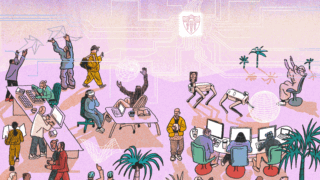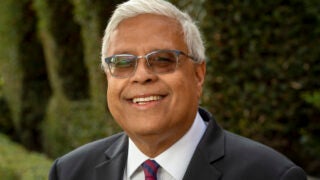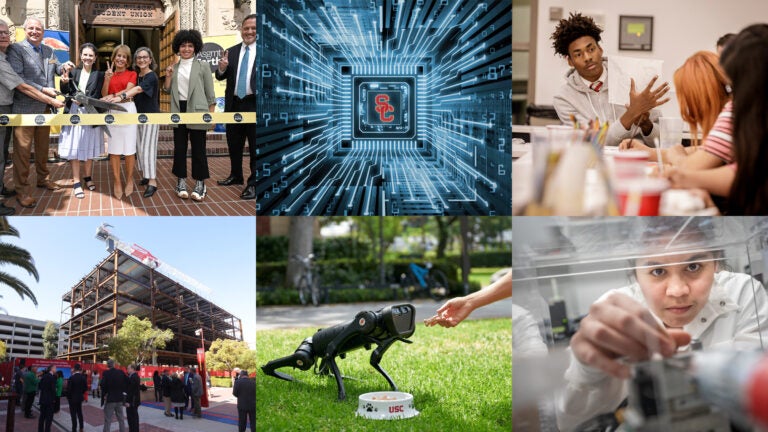
USC research spending surpasses $1 billion for the first time, federal report shows
The spending included significant investments in USC President Carol Folt’s “moonshots” in computing, health and sustainability.
A recent $4 million federal grant supports a center at the Keck School of Medicine of USC where researchers aim to improve health protections for children against air pollution. With a $4.5 million grant from the Defense Advanced Research Projects Agency, a USC Information Sciences Institute researcher could set new benchmarks for measuring progress in quantum computing. And more than $7 million in government grants support USC Stem Cell researchers in their efforts to find new therapies for kidney disease and Lou Gehrig’s disease.
It’s been a banner year for USC researchers. A new federal report confirms that as of June 30, 2023, USC reached a new high-water mark in annual research expenditures — $1.04 billion — with significant investments in USC President Carol Folt’s “moonshots” in computing, health affairs research and sustainability paving the way.
“This ranking recognizes the incredible work being done by USC’s game-changing researchers here and around the world,” Folt said. “Our ambitious moonshots in advanced computing, health and sustainability will continue to accelerate the growth of our research enterprise in every way imaginable.”
The latest federal Higher Education Research and Development Survey puts USC within an exclusive pack of 13 private universities whose research expenditures top $1 billion annually. Research expenditures are a nationally recognized measure of a university’s discovery and innovation enterprise.
The report shows that USC ranks first on the West Coast and fifth in the nation with $112 million in research spending in computer and information sciences in 2022. Among private universities, in research spending on social sciences — a category that includes economics, political science, public policy analysis and gerontology — USC’s $76 million trails only Harvard University.
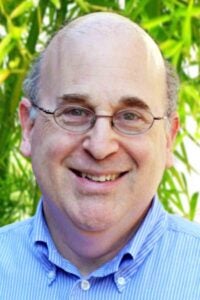
Other funding and research spending highlights over the past year:
- Paul Aisen was USC’s most highly funded scientist in 2022 with $52 million from federal sources, foundations and private industry. Aisen directs USC’s Alzheimer’s Therapeutic Research Institute, the nation’s largest center for organizing Alzheimer’s clinical trials.
- Folt’s announcement of the USC Frontiers of Computing initiative in May 2023 pledged more than $1 billion of investment into computing research and education by 2030. But even prior to that announcement, leading grant recipient Massoud Pedram of the USC Viterbi School of Engineering received $15 million from the U.S. National Science Foundation’s Expeditions in Computing program, one of only two such awards announced in 2022.
- Feifei Qian of USC Viterbi received $3 million from NASA to create robots that move like lizards, snakes and insects.
“This milestone in research expenditures reflects USC’s ongoing rise as one of the top private research universities in the United States,” said Ishwar K. Puri, senior vice president of the USC Office of Research and Innovation.
“I’m incredibly proud of our researchers and graduate students who are winning competitive grants that fuel discoveries that make life better for people in Los Angeles and around the world,” Puri said. “The collaboration across our university and with other institutions is what drives USC’s ability to create new knowledge and innovative ideas that truly make a difference in society.”
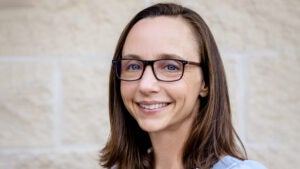
USC’s research expenditures are expected to keep rising, with a boost from the USC Stevens Center for Innovation. The center recently named Erin Overstreet as its new executive director. Overstreet will oversee the university’s commercialization of USC-driven property, bridging the sectors of discovery, education and venture capital.
The National Center for Science and Engineering Statistics, within the U.S. National Science Foundation, collects information on research and development spending from over 900 institutions each year. Higher education is a key component of the U.S. research and development system, helping drive innovation as well as scientific and technological breakthroughs.
USC’s expenditures for federal fiscal year 2022 showed a 14% increase ($130 million) since Folt’s arrival in 2019.
The National Institutes of Health is USC’s most significant source of research funding ($387 million), followed by the U.S. Department of Defense ($107 million) and the National Science Foundation ($72 million). The fourth largest in 2022 was pharmaceutical company Cognition Therapeutics ($21 million), followed by the California Institute for Regenerative Medicine, the state’s stem cell research agency ($11 million).
USC research: Pushing the boundaries of computing
Folt’s announcement of the Frontiers of Computing initiative reaffirmed USC’s status as a leading computing research institution. The new report shows that, in computing and computer science research spending, USC is outranked only by the Massachusetts Institute of Technology, Johns Hopkins University, the Georgia Institute of Technology and Carnegie Mellon University.
Other USC computer scientists and researchers in adjacent fields received funding to push the boundaries of current computing technologies in 2022. For instance, Itay Hen of the USC Information Sciences Institute received $4.5 million for three years from the Defense Advanced Research Projects Agency to develop quantitative benchmarks in quantum computing to measure progress toward specific goals.

“The U.S. government is interested in knowing whether and how exactly the quantum computers of the future are going to reshape technology and society as a whole,” said Hen. “Our team at ISI, together with colleagues from USC main campus as well as external partners from the academe and the industry across the United States, is developing the necessary methodology that would allow us to provide the government with the best possible answers.”
Krishna Nayak, a professor of electrical and computer engineering and biomedical engineering at USC Viterbi, received a four-year, $1.3 million grant from the National Institute of Arthritis and Musculoskeletal and Skin Diseases to develop next-generation MRI equipment. Nayak has worked on real-time magnetic resonance imaging of the human heart and vocal tract airway.
USC research funds are advancing drug development
“It’s all preclinical at the moment, but we’re getting to the stage where our leading drug candidates are getting ready to be patented. And those are going to be USC patents — the drugs are going to be invented at USC and will be owned by USC,” said Steve Kay, director of the Michelson Center for Convergent Bioscience and Provost Professor of Neurology and Biomedical Engineering and Biological Sciences at the Keck School of Medicine. “We have a program for drug discovery in colorectal cancer, and we’ve got some early-stage results that look really encouraging.”
Kay, who also co-directs the Rosalie and Harold Rae Brown Center for Cancer Drug Development at the USC Norris Comprehensive Cancer Center, attests to the power of collaborative funding for accelerating research projects into new therapies for patients. Last year, a new class of small molecule drugs moved into phase one clinical trials — a project led by Kay. The molecules are the first to target circadian clock proteins, which play a key role in the recurrence and spread of glioblastoma, a deadly brain cancer.
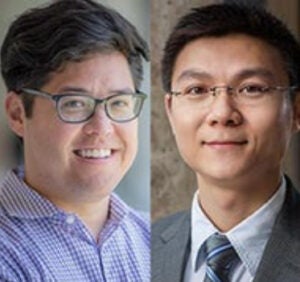
As recipients of NIH Director’s Awards, USC Stem Cell scientists Justin Ichida ($5 million) and Zhongwei Li ($2.5 million) secured funds to pursue potential therapies for ALS (also known as Lou Gehrig’s disease) and kidney disease.
The awards, which honor exceptionally creative scientists proposing unconventional approaches, allow Ichida to pioneer an improved approach for using patient-derived cells to discover drugs that may treat amyotrophic lateral sclerosis, also known as ALS. Li will combine natural developmental cues with bioengineering to direct stem cell-like progenitor cells to begin self-assembling into a synthetic kidney.
Of USC’s work in developing Alzheimer’s treatments, Kay notes that “Aisen is at the center of this huge hub of clinical trials that are testing all of these Alzheimer’s drugs. USC is heavily involved and influential in how Alzheimer’s disease clinical trials are designed, how patients are recruited and how companies are brought in to fund these clinical trials. They’re right at the cutting edge.”
Research for a sustainable future
Reducing Southern California’s infamous air pollution through more sustainable policies, practices and technologies starts with pinpointing sources and impacts. A portfolio of awards and publications at the intersection of environment and public health are advancing Folt’s ambitions toward a sustainable future.
For example, the NIH awarded USC researchers $4 million to create a research center aimed at protecting children from near-roadway and regional air pollution released by various industries, including through the transportation of goods, urban oil and gas production, and wildfires.
The Southern California Center for Children’s Environmental Health Translational Research, led by Rob McConnell and Jill Johnston of the Department of Population and Public Health Sciences at Keck School of Medicine, examines how these threats disproportionately affect children, especially in marginalized communities and communities of color, in California and worldwide.

Public health researchers made important contributions in 2022. For example, one study described how the risk of death surges when extreme heat and air pollution coincide — a sobering finding in light of the warming climate and ongoing challenges in reducing the use of fossil fuels.
Other work detailed dangers posed by “forever chemicals” called polyfluoroalkyl substances (PFAS), which are found in fast-food wrappers, pizza boxes and waterproof fabrics, and are linked to liver cancer. The investigative team also includes engineers developing methods for PFAS decontamination because the chemicals have seeped into groundwater supplies in California and elsewhere in the nation.
“To address urgent public health problems, we look for creative, solution-oriented approaches that blend everything from data science to community-building,” said Howard Hu, professor and Flora L. Thornton Chair of the Department of Population and Public Health Sciences at Keck School of Medicine. “Our goal is to translate research into specific, actionable strategies to protect and improve human health.”
Featured Experts
Paul Aisen
Expert in Alzheimer’s disease therapeutic research, Multicenter trials, Trial design, Biomarkers and Cognitive assessment
Steve Kay
Expert in circadian rhythms in plants and mammals, circadian clock, chronobiology, biological rhythms, biological clock, body clock, day-night cycle, clock genes, peak times, circadian transcriptional networks, sleep-wake cycle, evolution of circadian clock, biochemistry, neurology, physiology and biophysics
Feifei Qian
Expert in Robotics, Bio-inspired robots, Animal and robot locomotion, Robot-environment interactions, Locomotion on sand, Obstacle-aided navigation and Robot-human teaming in scientific exploration


